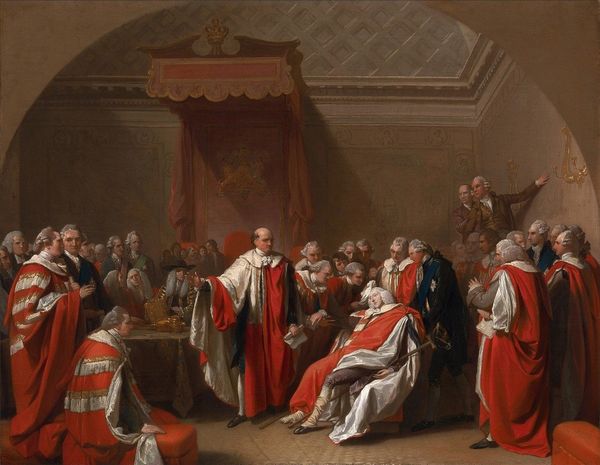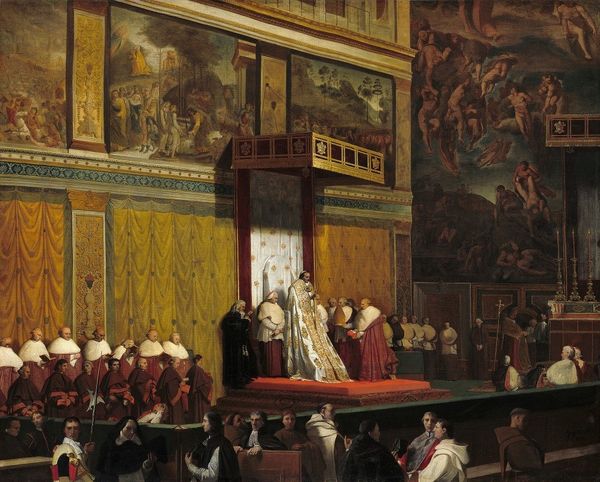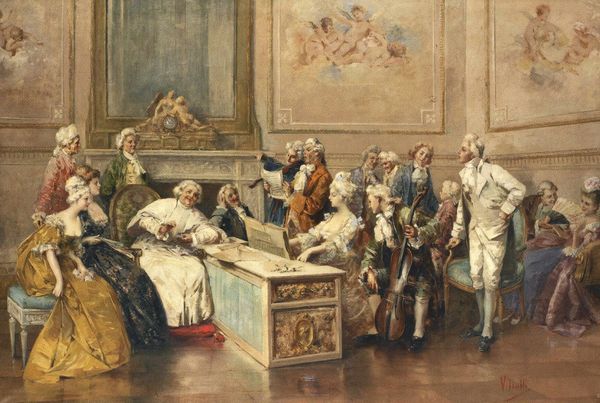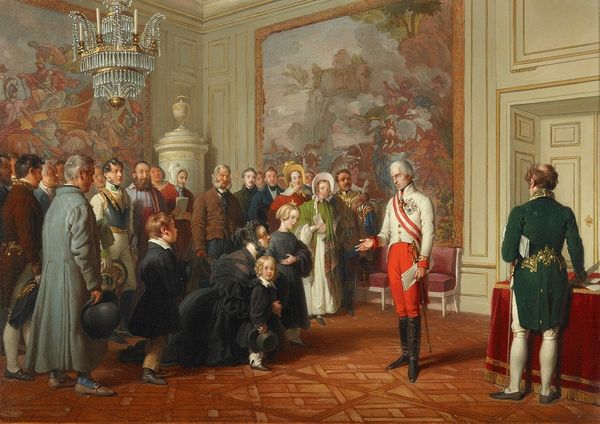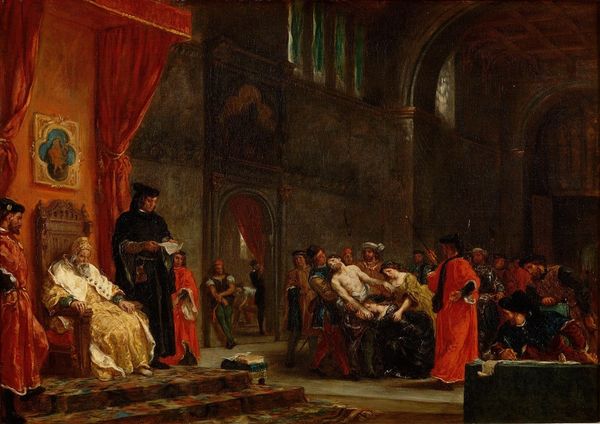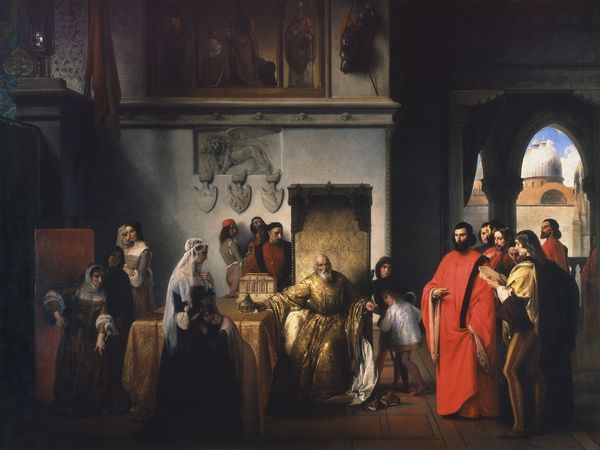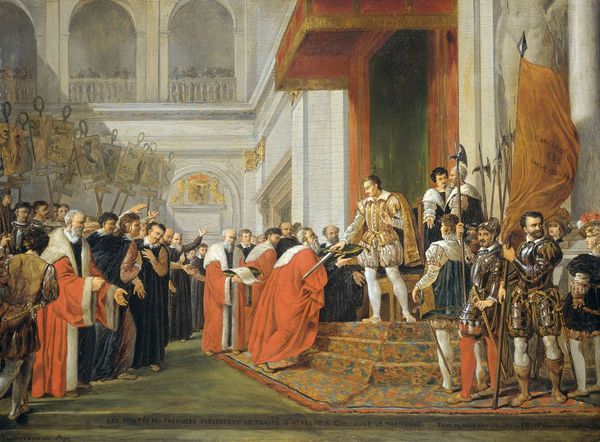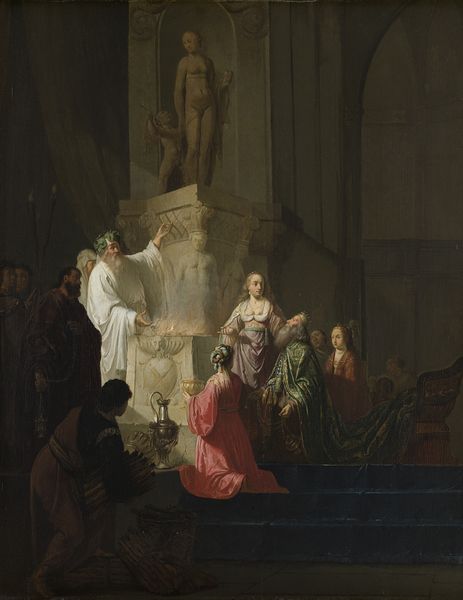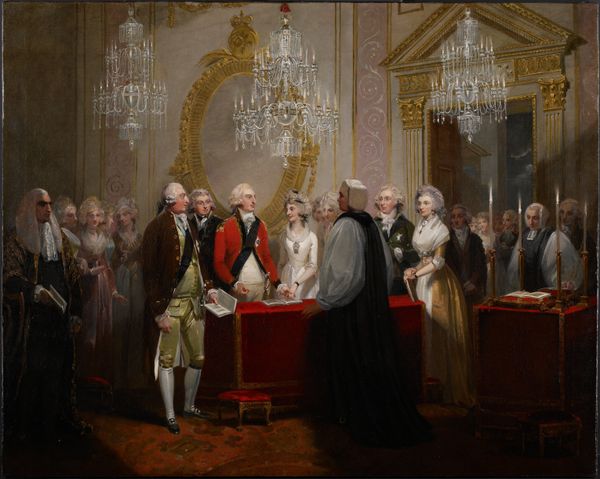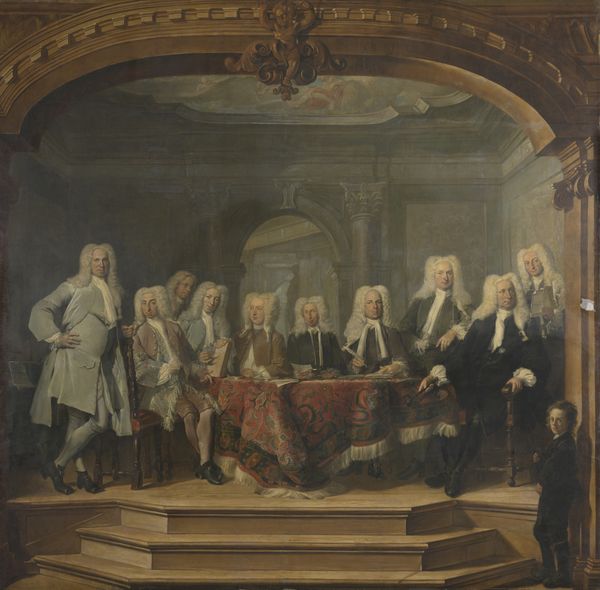
The Death of the Earl of Chatham 1781
0:00
0:00
johnsingletoncopley
National Portrait Gallery, London, UK
Dimensions: 307.3 x 228.6 cm
Copyright: Public domain
Editor: We're looking at John Singleton Copley’s 1781 painting, "The Death of the Earl of Chatham," made with oil paints. It’s a monumental scene! The red robes are visually striking, but there's such a strong sense of stillness and gravity about it. What do you see in this piece, beyond just a historical record? Curator: Ah, yes, Copley masterfully captures a pivotal moment. It’s more than just history; it’s a carefully orchestrated stage. Those vibrant reds draw our eye directly to the drama, the pallor of Chatham amidst that sea of crimson. It's as though he's illuminated by the gravity of the occasion. But notice also how the faces around him, although individual, are unified in their gaze, their concern. Almost as if time has stood still to acknowledge something truly historic. It poses questions about legacy and remembrance, doesn’t it? Editor: Definitely. It makes you think about how these grand events are, in some ways, also very intimate moments. So the painting captures not only a loss for a nation, but the profound silence and human emotion. Curator: Exactly. The scale is important too, isn't it? A large history painting was supposed to teach you something but now it also presents grief. These weren’t just nameless figures, but recognizable peers, facing mortality and maybe reflecting on their own. Do you find it evokes a certain sense of...melancholy, perhaps? Editor: Yes, absolutely melancholy! There's something incredibly powerful about seeing such a personal moment play out on such a public scale. Curator: So, Copley gives us theatre of emotion, where individual lives brush shoulders with political consequences and historical weight. And, from that combination, meaning rises! Editor: I agree! I think I initially just saw the grandeur of the event but now I really see the shared human experience. Thank you.
Comments
No comments
Be the first to comment and join the conversation on the ultimate creative platform.
